All-new Compact Crossover with A Familiar Name
Like a Phoenix rising, Mitsubishi resurrected the Eclipse name in 2018. In its previous iteration, from 1990 – 2012, the Eclipse was a very competent and popular coupe or convertible that could be pretty sporty with the right equipment. Now it is an all-new compact crossover, officially known as the 2018 Mitsubishi Eclipse Cross.
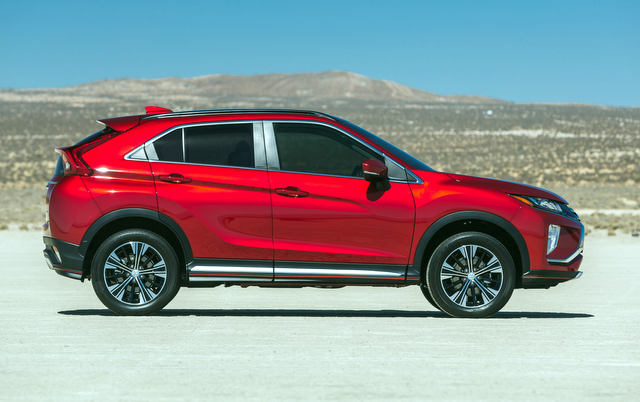
Slotting between the Outlander Sport and the Outlander, the Eclipse Cross enters the hottest segment of the auto market, so expectations are high. But will a good-looking design and a very attractive entry price be enough for buyers to give it a try?
Drivetrain
The Super-All Wheel Control, not All Wheel Drive, 2018 Mitsubishi Eclipse Cross is powered by a 1.5-liter turbocharged 4-cylinder engine that runs on 87 octane gasoline. The 152 horsepower and 184 pound-feet of torque, was delivered through a Constant Variable Transmission (CVT) with an eight-step Sport mode and paddle shifters. Super-All Wheel Control is Mitsubishi’s terminology and philosophy for its proprietary all-wheel drive system.
The EPA rates fuel economy at 25 mpg city/26 highway/25 combined mpg, which is mid-to-low for this category. Ratings for key competitors to the Eclipse Cross include the Subaru Outback at 25 city/32 highway/28 combined; the Jeep Compass 23/32/26; and the Honda CR-V at 27/33/29.
Over 480 miles of 75-percent highway/25-percent city driving, Clean Fleet Report averaged 27.4 mpg. In an all-freeway run of 204 miles, with the adaptive cruise control set at 65 mph and in the driver-selectable Eco mode, we averaged a respectable 31.1 mpg. So, on a long road trip, the 15.8-gallon fuel tank could get you about 470 miles down the road.
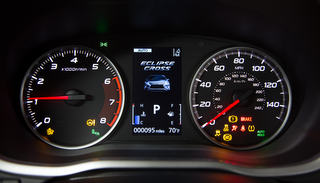
Fuel economy reported by Clean Fleet Report is non-scientific and represents the reviewer’s driving experience. If you live in cold weather, high in the mountains or spend time in the city or stuck in rush hour traffic, then your numbers may differ.
The engine and transmission combination was good around town, but strained during hard acceleration or passing on the highway. The 1.5-liter turbocharged engine is the smallest displacement Clean Fleet Report has tested recently. Our take is that it was working hard in most critical acceleration situations. The paddle shifters helped a bit by holding the CVT in a power band for more pull, but in a few 0–60 runs, we never turned any better than 9.0 seconds. We also sensed, under certain rpms and speeds, a shudder between 2nd and 3rd gears.
Driving Experience: On the Road
The Eclipse Cross feels all of its 4,830 pounds when trying to take corners faster than the posted speed. The body lean and the light steering feel made us lift off the accelerator and take it a bit slower. Even the 18-inch, black painted wheels shod with 225/55 Bridgestone Ecopia tires were not much help when cornering swiftly.
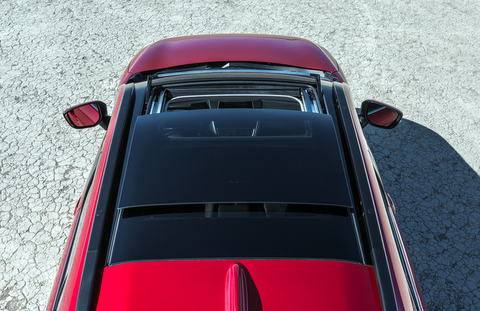
The handling didn’t get any better on Southern California’s freeways, where the concrete surfaces have been grooved to disperse water. At 65+ mph, the Eclipse Cross absorbed small bumps well, but there was another issue that only reducing speed remedied. The Eclipse Cross, at freeway speeds, moved back-and-forth to the point of producing an obvious rocking sensation. A friend accompanying me likened it to standing-up in a small aluminum fishing boat, on a calm lake, when a small wake starts rocking your boat. This very descriptive feeling was accurate and was the first time we had experienced it in a compact crossover.
As mentioned earlier, the electric power steering was light on the road, but was just right in town for parking and maneuvering at slow speeds. Stopping was straight and true with no fading from the four-wheel disc, ABS system with electronic brakeforce distribution, brake assist and active stability and traction control.
Driving Experience: Exterior
Mitsubishi says the Eclipse Cross has a “vibrant and defiant design†with “coupe-like styling in a CUV (Crossover Utility Vehicle) package.†Mitsubishi is so confident with the Eclipse Cross design that they are “encouraged that its distinctive styling will make it very competitive in its segment.â€
Clean Fleet Report’s take?
The Eclipse Cross certainly is different from the other Mitsubishi crossovers—extroverted might be a good term for it. The hood has a downward slope, with extra chrome on the “dynamic shield†design concept of the front grill. The LED headlights wrap sleekly around the fender, while the LED fog lights sit on the outer edges of the lower front fascia.
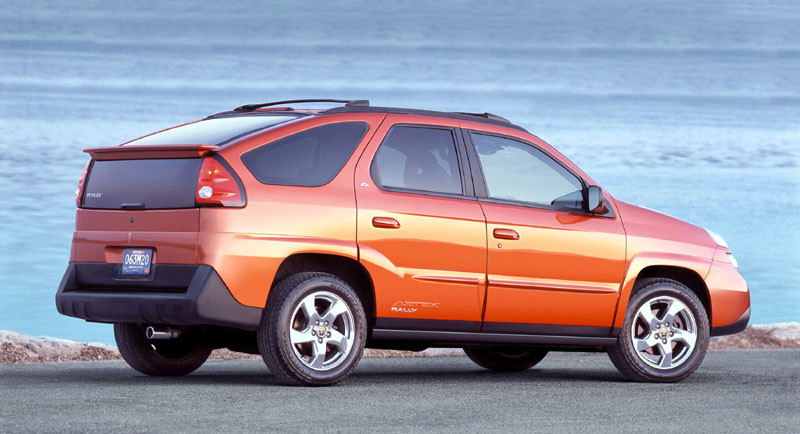
From the side view, the coupe-like styling Mitsubishi mentioned is not so obvious, but the front-to-rear upsweeping belt line does create a pleasant flow. The rear-sloping roof includes the dual-pane panoramic sunroof, rack rails, a shark fin antenna, and ends in an integrated spoiler over the rear hatch window. The rear LED combination tail lights sit above a chrome strip, the Mitsubishi three-diamond chrome badge, and even more chrome on the lower rear bumper. What really made the Eclipse Cross an attention-getter was the optional ($595) Red Diamond paint. Since you will probably own your Eclipse Cross for many years,
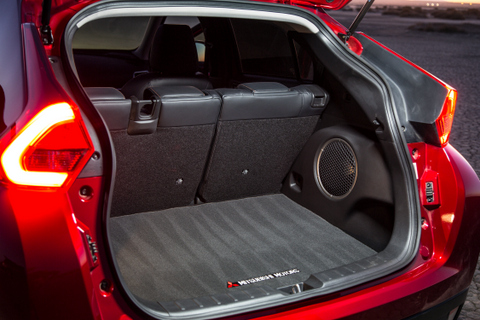
this is smart option to spring for.
Now, about that rear end. Did the Mitsubishi designers never see the Pontiac Aztek that had an inglorious run from 2001- 2005? Among the most pilloried car designs of recent times, the Aztek’s odd front end and bifurcated rear window drew scorn. Mitsubishi gladly designed the Eclipse Cross with a good-looking nose, but the rear hatch is treading curiously close to that of the Aztek. Split rear windows are not unique to the Eclipse Cross, but that does not make it any more acceptable, especially as it affects rearward vision.
Driving Experience: Interior
The interior on our test Eclipse Cross SEL was fully optioned, including the very convenient and helpful Head-up Display, or HUD. Hard plastic and desirable soft touch materials were about evenly split on the doors and dash. The dash layout is simple, accommodating and clean, with easy-to-find controls. The simplicity of the dash layout made reading gauges (with black faces and white numbers) easy on the eyes. Features such as the On/Off Start button were convenient to find and use. The piano black and silver accent pieces were an upscale touch.
The Eclipse Cross SEL with the Touring Package ($2,500 option) comes with a 7.0-inch smartphone-linked touch screen that houses the 710-watt Rockford-Fosgate premium sound system with nine speakers, a 10-inch subwoofer and a built-in equalizer. The system came with SiriusXM (three-month trial subscription), digital HD AM/FM/CD radio, MP3, USB port with iPod connectivity, Aux-in jacks, Bluetooth streaming audio and hands-free telephone. The system is compatible with Apple CarPlay and Android Auto. The auto-dimming rearview mirror was Homelink equipped.
Clean Fleet Report is a big fan of knobs and wheels. Mitsubishi gets an A+ for the climate control wheels being large and easy to operate. Unfortunately, they did not get a passing grade for the radio, as it had no volume and channel-selecting radio knobs. They also did not impress us with the oddly designed, non-user friendly way this great sound system is controlled. Control options include steering wheel mounted controls, a center console-mounted touchpad and the touchscreen. The touchscreen is small and takes multiple steps to go from one setting to another; using either the touchscreen or touchpad requires drivers take their eyes off the road. For all the attempts by Mitsubishi to be modern and far-forward thinking, operating the sound system is non-intuitive and not at all easy. Clean Fleet Report strongly recommends that, when Mitsubishi comes out with the refreshed Eclipse Cross in a few years, the infotainment system have volume and channel knobs.

The Eclipse Cross says it can seat three adults on the 60/40 split, leather bench rear seat, but for longer trips two adults would be more comfortable. Headroom out back was tight for the tallest passengers. The rear seat slides and reclines, and on the SEL trim package the outboard seats are heated. But the seats lack padding and the backs are not sculpted, so the seating portion is too upright. Storage was good with the rear seat up, and much improved when folded flat.
Upfront, the driver gets an eight-way power adjustable, heated leather seat, but oddly there was no lumbar adjustment. The front passenger heated leather seat adjusts four -ways manually, but again no lumbar and, curiously, no height adjustment. Bolstering for the front seats could be improved. The leather-wrapped and heated, tilt and telescopic steering wheel has audio and telephone controls.
Other nice interior features are the rear seat folding armrest with cup holders, rear heater floor ducts, automatic climate control, power windows and door locks, heated and power outside mirrors with turn signals, center console with slide-adjustable arm rest, lighted extendable sun visors, and 12-volt accessory outlets, one each front and rear. The steering wheel, gear shifter and emergency brake handle were covered in black leather.
Convenience
The 2018 Eclipse Cross came with convenience features including adaptive cruise control, rain sensing wipers, rear window wiper, remote and passive keyless entry, rear cargo tie-down hooks, rear floor heat ducts, tire pressure monitoring system and a temporary spare, hill start assist, remote engine start, an anti-theft security alarm and anti-theft immobilizer.
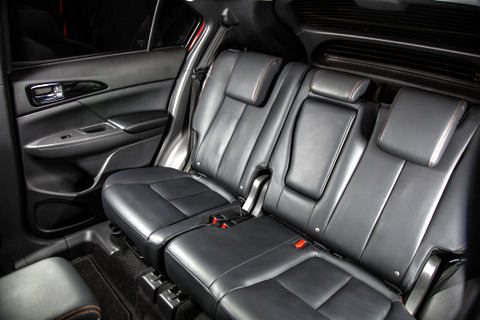
Safety
Either as standard or optional equipment, active and passive safety features are available on the Eclipse Cross. These include front, side, curtain and knee airbags, lane change assist, forward collision mitigation, blind spot warning, rear cross traffic alert and park assist sensors.
For a two-year subscription trial, Mitsubishi Connect gives owners a telematic system that connects them to a call center for emergencies while certain emergencies are reported automatically through the 4G LTE cellar modem and GPS. Go to Mitsubishi Connect for more information.
Pricing and Warranties
The 2018 Mitsubishi Eclipse Cross comes in four models and a total of six trim levels.
ES, 2WD $23,295
ES, S-AWC $23,895
LE, S-AWC $24,895
SE, S-AWC $26,395
SEL, S-AWC $27,895
SEL Touring $30,395
Clean Fleet Report’s Eclipse Cross SEL, with optional equipment, had a MSRP of $31,315. All listed prices do not include the $995 destination and handling charge.
The 2018 Mitsubishi Eclipse Cross comes with these warranties:
- Powertrain 10 years/100,000 miles
- New Vehicle Five years/60,000 miles (Fully transferable)
- Anti-Corrosion Seven years/100,000 miles
- Roadside Assistance Five years/Unlimited miles
Observations: 2018 Mitsubishi Eclipse Cross SEL 1.5T S-AWC
Mitsubishi has a lot riding on the 2018 Eclipse Cross as the compact crossover utility segment is hot and getting hotter. The many established players in this field already have had a few model years under their belt with improvements coming from each revision. From this standpoint, Mitsubishi is a few runs down before the first pitch has been thrown. So what to do?
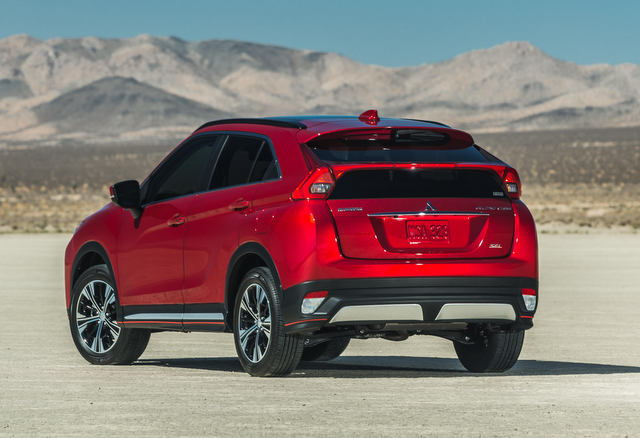
The first thing is for Mitsubishi to take the good from the 2018 Eclipse Cross, and there are many, as they have produced a well-equipped small crossover for under $24,000. Mitsubishi can be proud of the features, design, warranty, utility and low entry price, to tell a compelling story. A few upgrades and tweaks do not have to wait for the next five-year redesign cycle, but can be done starting with the next model year.
A priority would be to address the handling and suspension. Next would be lumbar adjustment for the driver, and a height and lumbar adjustments for the front passenger seat. Certainly, they should take a look at making the infotainment system more driver friendly and driving safe. They could also add some bolstering to the seats, which would make people want to take the Eclipse Cross on a long road trip.
Clean Fleet Report was impressed earlier with the Outlander PHEV; we found the Outlander Sport to be a little long in the tooth, but a good overall crossover. So, Mitsubishi is close to playing eye-to-eye with the segment leaders, and we hope they get there sooner than later.
Whatever you buy, Happy Driving!
Related Stories You Might Enjoy—The Compact Crossover Crowd
Road Test: 2018 Subaru Outback
Road Test: 2018 Honda CR-V
Road Test: 2018 Volkswagen Tiguan
Road Test: 2017 Ford Escape
Road Test: 2018 Chevrolet Equinox Diesel
Road Test: 2018 Toyota RAV4 Hybrid
Road Test: 2017 Nissan Rogue Hybrid
Road Test: 2017 Hyundai Tucson Fuel Cell
Flash Drive: 2017 Mazda CX-5
Road Test: 2017 Kia Sportage
Disclosure:
Clean Fleet Report is loaned free test vehicles from automakers to evaluate, typically for a week at a time. Our road tests are based on this one-week drive of a new vehicle. Because of this we don’t address issues such as long-term reliability or total cost of ownership. In addition, we are often invited to manufacturer events highlighting new vehicles or technology. As part of these events we may be offered free transportation, lodging or meals. We do our best to present our unvarnished evaluations of vehicles and news irrespective of these inducements.
Our focus is on vehicles that offer the best fuel economy in their class, which leads us to emphasize electric cars, plug-in hybrids, hybrids and diesels. We also feature those efficient gas-powered vehicles that are among the top mpg vehicles in their class. In addition, we aim to offer reviews and news on advanced technology and the alternative fuel vehicle market. We welcome any feedback from vehicle owners and are dedicated to providing a forum for alternative viewpoints. Please let us know your views at publisher@cleanfleetreport.com.

2 thoughts on “Road Test: 2018 Mitsubishi Eclipse Cross SEL 1.5T S-AWC”